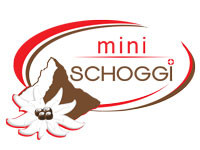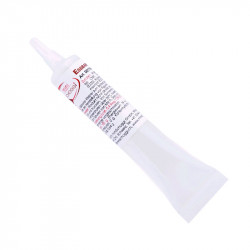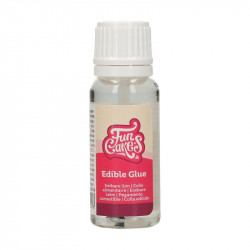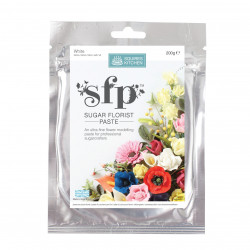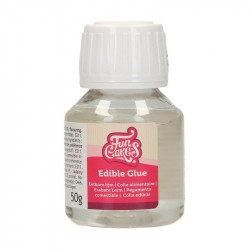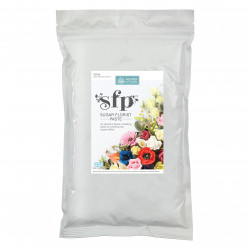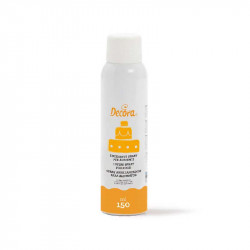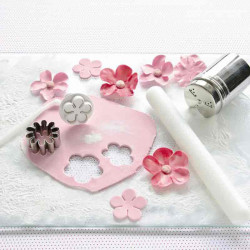-
MenuBack
-
Online Store
-
-
-
-
-
Leer
- Couverture
- Temperature control units
- Aids for chocolate
- Chocolate molds
- Praline fillings
- Chocolate ingredients
- Praline hollow body
- Chocolate colors
- Chocolate tattoos
- Chocolate packaging
- Bean to Bar
- Material for cutting chocolates
- Batons with Kirsch
- Airbrush for chocolate
- High Heels Accessories
- Textured films for chocolate
- Chocolate fountain & fondue
-
-
-
-
-
Kuchen & Torten
- Cakes Fillings & Ingredients
- Fondant & Marzipan
- Cakes tools
- Cake rings
- Silicone molds
- Baking pans for cakes
- Cake stand
- Cakes packaging
- Airbrush for cakes
- Sugar flowers accessories
- Cake Topper & Wedding Figurines
- Cakes dummies
-
-
-
-
-
-
-
-
-
-
-
-
-
-
-
-
-
-
-
-
-
-
-
Füllungen
- Baking chocolate
- Glucose & Sorbitol
- Cocoa beans
- Cocoa nibs
- Monin syrup
- Champagne & Alcohols
- Freeze dried fruits
- Cake & cake glaze
- Flours & baking ingredients
- Chocolate coating & chocolate
- Milk powder
- Granules
- Nuts & Nougat
- Fruit puree
- Creams & Fillings
- Egg yolk & egg white
- Fruit powder
- Special ingredients
- Fondant & Flower Paste
-
-
-
-
-
-
-
- Punching, cutting & embossing
- Mixing bowls & whisks
- Chocolate material
- Thermometer & Burner
- Gloves & Protective Material
- Smoothing & Modeling
- Roll out bar
- Dough scraper & horn
- (Flour) sieves
- Cake turntable
- Spatula & Spatula
- Silicone embossing molds
- Insert strips & cake slices
- Brushes & Tweezers
- Measuring cup
-
-
-
-
-
-
-
-
-
Ausstechformen
-
-
-
-
-
-
-
-
-
Courses
-
-
kurse
- Current courses
- Praline courses
- Chocolate courses
- Chocolate kiss course
- Macaron courses
- Cake courses
- Baking courses
- Patisserie courses
- Ice cream course
- Guetzli, Cookie & Confectionery Courses
- Bread courses
- Pasta courses
- Apéro course
- Cupcakes courses
- Éclair course
- Courses in Zurich - Adliswil
- Children's courses
-
-
- Team Events
- Hen Night
- Retail Store
-
About Us
-
-
-
DirectionsDownload relevant PDF now.
-
-
-
Recipes blog
-
-
Recipes Blog
-
-
-
Shipping and Payment
-
-
Versand/Zahlung/Impressum
-
-
- Online Shop
-
- Novelties
- Sale
- Chocolate and chocolates
- Couverture
- Temperature control units
- Aids for chocolate
- Chocolate molds
- Praline fillings
- Chocolate ingredients
- Praline hollow body
- Chocolate colors
- Chocolate tattoos
- Chocolate packaging
- Bean to Bar
- Material for cutting chocolates
- Batons with Kirsch
- Airbrush for chocolate
- High Heels Accessories
- Textured films for chocolate
- Chocolate fountain & fondue
- Couverture
- Gifts Cards
- Stencils & Stencils
- Cakes & Pies
- Ice cream
- Bread
- Macarons
- Hearty
- Recipe booklets & books
- Cupcakes
- Dessert
- Cake Pops
- Edible decorations
- Fillings & Ingredients
- Glucose & Sorbitol
- Cocoa beans
- Baking chocolate
- Cocoa nibs
- Monin syrup
- Champagne & Alcohols
- Freeze dried fruits
- Cake & cake glaze
- Milk powder
- Flours & baking ingredients
- Chocolate coating & chocolate
- Granules
- Nuts & Nougat
- Fruit puree
- Creams & Fillings
- Egg yolk & egg white
- Fruit powder
- Special ingredients
- Fondant & Flower Paste
- Food Colors
- Auxiliary means
- Spouts & piping bags
- Fondant, marzipan, flower paste
- Bakeware
- Aprons & Potholders
- Cookie cutters
- Season
- Candles
- Party accessories
- Tableware
Flower paste
There are 8 products.
Active filters
Flower paste
Flower paste is an edible modeling clay used for making filigree sugar flowers. It consists mainly of sugar and gum arabic, which gives it an elastic texture that is easy to shape and model.
To make filigree sugar flowers from flower paste, there are several steps:
1. Preparation: Prepare the necessary tools, such as special cookie cutters, flower cutters, rolling stick and wire.
2. Petals: Roll out the flower paste thinly and cut out the desired flower shape with a cookie cutter. Use a flower mold or sculpting tool to give the petals a natural shape. Let the petals dry.
3. Stamens and stamps: Roll small balls of flower paste and press them into special stamps to make stamens. You can also form small stamens out of wire and cover them with flower paste.
4. Assembling the flower: Use a flower wire and roll it with some flower paste. Connect the individual petals by carefully wrapping them around the wire and fix them with some edible glue.
5. Drying: Let the sugar flower dry in a cool and dry place until it is completely solid.
6.Decorating: Paint the petals as needed with edible paints or dust them with edible glitter powder to add extra sparkle and color.
Please note that making delicate sugar flowers from flower paste requires some practice to achieve the desired results.
Flower pastes, also known as gumpastes, are a sugar mass that can be ideally used for cake decorations and are preferred by numerous master bakers. The paste hardens much faster than fondant and is also much more elastic, which makes it thinner and easier to work with. Especially flowers and fine leaves are much easier to make with the help of flower paste.
You can buy flower paste in many bakery stores and online stores. In Switzerland, you will find a large bakery store in Zurich at miniSchoggi, where you can buy ready-made flower paste in 200 g or directly in the large 1 kg pack. If Zurich is too far away for you, you can also buy the flower paste conveniently via the miniSchoggi online store.
Filigree decoration elements from flower paste
Similar to fondant, flower paste also consists mostly of sugar. Nevertheless, it can be rolled out thinner due to its more flexible and softer consistency and also hardens faster. This is a decisive advantage for cake artists, because masterly flowers, leaves and the like retain their perfect shape even after hardening.
In contrast to other, frequently used modeling pastes, gumpaste is significantly more elastic and thus offers ideal conditions for the production of a wide variety of decorative elements. Airtight packaging of unused flower pastes is essential so that the mass does not dry out or harden too quickly.
Numerous applications of flower paste Gumpaste is ideal for the production of filigree cake decorations due to its particularly high elasticity. Before processing, the paste should be kneaded briefly so that the entire mass is more pliable and better stretched. This allows you to roll out the gumpaste very thinly. This makes the petals or other decorative elements formed from it look particularly detailed and real. However, since the paste hardens quickly in the air, it is important to work quickly when modeling and to immediately reseal the unused mass airtight.
The paste can be excellently colored if required, so that I can perfectly implement color accents. Food colorants in paste form are well suited for coloring, because they are available in all imaginable color variations and are extremely productive, whereby a bright, intensive coloring can be achieved. In our online store you will find both flower paste and the necessary coloring agents in a large selection and at fair prices.
How can I make flower paste myself?
To make your own flower paste, you will need the following ingredients:
- 250 g powdered sugar (sifted)
- 1 tsp CMC powder (carboxymethylcellulose)
- 1 tsp Tylose powder (cellulose gum)
- 2 tbsp water (warm)
- 1 tsp glycerine
- food coloring (optional)
This is how you proceed:
1. In a bowl, mix the sifted powdered sugar with the CMC powder.
2.Dissolve the tylose powder separately in warm water until a lump-free mass is formed.
3. Add the dissolved tylose mass to the powdered sugar and mix everything thoroughly.
4. Add the glycerin and knead well again until a smooth dough consistency is formed. The dough should be flexible but not sticky.
5. If you think the paste is still too dry, you can add a little water. If it is too sticky, add some extra powdered sugar.
6. If you want to make colored flower paste, add a few drops of food coloring and knead it in thoroughly.
7. Wrap the finished flower paste in plastic wrap and let it rest in the refrigerator for at least 12 hours. This will make it firmer and easier to work with.
You can now use the flower paste to make various flowers and decorations for cakes and pastries.
What is the shelf life of flower paste and how should I store it?
Flower paste usually has a shelf life of about 6 months if stored properly. To extend the shelf life, it should be stored in a cool and dry place. It is advisable to store the paste in an airtight container or a tight plastic bag to avoid moisture and air infiltration. In addition, the paste should be protected from direct sunlight, as this may cause discoloration.
